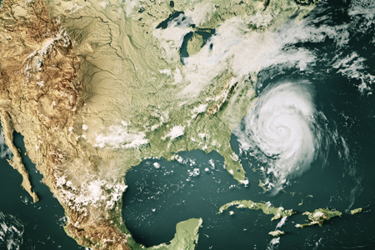Extreme Weather Is Testing Pharma's Resilience — Is It Ready?

By Katie Anderson, Chief Editor, Pharmaceutical Online

Recent government initiatives to onshore pharmaceutical manufacturing, strengthen U.S. supply chains, bring critical drugs to market faster and stockpile the domestic reserve of critical medicines may all be for not if they don’t consider one critical factor—weather.
It may sound like a stretch, but researchers from Harvard University showed how a disproportionate amount of pharmaceutical manufacturers are in areas of climate-driven extreme weather events. Is the pharmaceutical industry currently set up to withstand them?
The Research
The research began when Mahnum Shahzad and his team at Harvard noticed how Hurricane Helene impacted the U.S. supply of IVs. “We saw how patient care was disrupted as a result of Hurricane Helene damaging a Baxter manufacturing facility that produced about 60% of the IV fluids used by patients in the U.S. We wanted to see if this was a prevalent issue,” noted Shahzad.
The team referenced the U.S. Food and Drug Administration’s Drug Establishments Current Registration Site to find all the pharma manufacturers between 2019 and 2024. They then cross-referenced those sites with the counties that had Presidential Disaster Declaration by Federal Emergency Management Agency (FEMA) between 2019 and 2024. They considered disasters such as floods, fires, hurricanes, tornadoes, and storms. All pharmaceutical facilities that “manufacture, prepare, propagate, compound, or process drugs” were considered.
Once the team dug deeper, it found that many pharmaceutical facilities have been impacted by disasters. In some years, the figure was nearly half.
The Findings
The facility numbers ranged from 5,063 in 2022 to 8,790 in 2020, with a total of 10,861 facilities in the research. In 2020, nearly 44% or 3,860 facilities, experienced a disaster. Comparatively, in 2023, 33% of facilities experienced a disaster and 41% experienced a disaster in 2024.
In the five years studied, 6,819 or 62% of the 10,861 facilities experienced a disaster, and 2,146 (33.8%) facilities had a disaster once a year. There were different types of disasters reported, but the most common among them was hurricanes.
What can Pharma Do?
As we know, a large proportion of pharma research and manufacturing facilities are in major coastal cities in New York, North Carolina, New Jersey, Massachusetts and California—areas that experience hurricanes, earthquakes, and wildfires. Shahzad pointed out that data suggests these disasters are only going to increase in these areas. “Data shows that disasters are increasing in frequency and intensity, so we expect that counties with facilities will continue to be impacted,” he noted.
The question remains, what safeguards can the pharmaceutical industry put in place to protect themselves and patients? Shahzad emphasized that a major focus should be on diversifying the supply chain.
“Drug supply resiliency is an important issue. What I am concerned about is making sure that we have redundancy in the supply chain. If a single facility is making all or most of a pharmaceutical product that patients need, any damage to that facility would have significant impact. To build resilience, we would need diversification of manufacturing,” Shahzad continued.
Shahzad recognized that this solution is a costly one, but suggested it may be a place where the government’s recent policy focus can help. “I think it would likely need a governmental subsidy or some other incentive/regulation to actually achieve this outcome. We are seeing lots of policy changes, and natural disasters are increasing. As policy changes move facilities into the U.S., this could be a great moment to think about facility-level resilience and also to think more about how we build a resilient supply chain,” he explained. Pharmaceutical manufacturers have been mandated to onshore production or face massive tariffs, but the resolution is much easier with the deeper pocketbooks of large pharma. The small to mid-size pharmaceutical manufacturers, including those in generics where a large portion of crucial medicines are made, will likely require assistance from the government.
Technological and structural safeguards to facilities might also be an option, according to Shahzad; however, he hesitated to elaborate with that topic not being in his area of expertise. “I think there is new technological innovation and structural changes that can actually reduce/mitigate damage in the event of a disaster,” he commented.
The U.S. is already working on beefing up the national stockpile of critical medicines, which will undoubtedly be helpful if/when future natural disasters affect major pharmaceutical manufacturers. Shahzad furthers that greater transparency into the entire pharmaceutical supply chain will help the industry assess the real risks and put safeguards in place.
As more manufacturers pledge money to U.S. pharmaceutical manufacturing, there is no better time than now to consider supply chain diversification and engineering facilities to better withstand nature’s wrath—the health of the patient depends on it.
